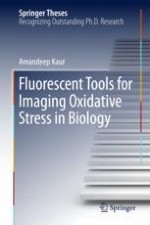
2018 | OriginalPaper | Buchkapitel
1. Introduction
verfasst von : Amandeep Kaur
Erschienen in: Fluorescent Tools for Imaging Oxidative Stress in Biology
Aktivieren Sie unsere intelligente Suche, um passende Fachinhalte oder Patente zu finden.
Wählen Sie Textabschnitte aus um mit Künstlicher Intelligenz passenden Patente zu finden. powered by
Markieren Sie Textabschnitte, um KI-gestützt weitere passende Inhalte zu finden. powered by